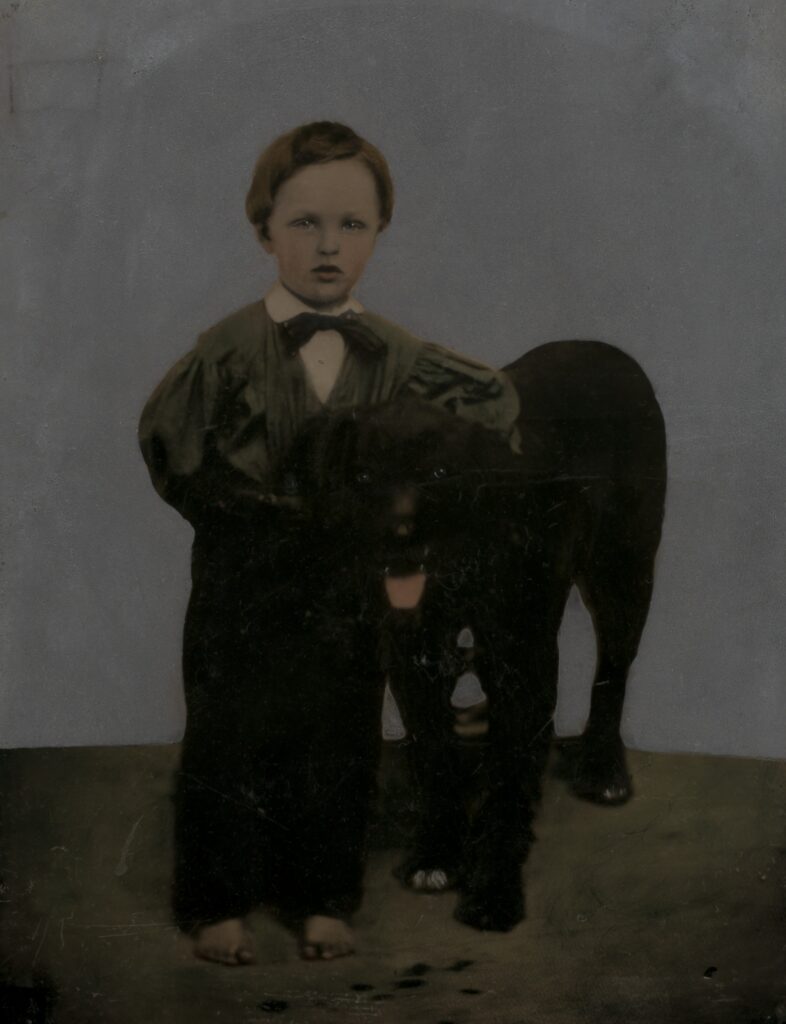George and his Dog
By Lydia Maria Child
Annotations by Maggie Kelly/JB

the 1854 edition of Flowers for Children Part I.
George had a large and noble dog With hair as soft as silk; A few black spots upon his back, The rest as white as milk. And many a happy hour they had, In dull or shining weather; For, in the house, or in the fields, They always were together. It was rare fun to see them race, Through fields of bright red clover, And jump across the running brooks, George and his good dog Rover. The faithful creature knew full well When master wished to ride; And he would kneel down on the grass, While Georgy climbed his side. They both were playing in the field, When all at once they saw A little squirrel on a stump, With an acorn in his paw. Rover sent forth a loud bow-wow, And tried to start away; He thought to scare the little beast Would be a noble play. But George cried out, “For shame! for shame! You are so big and strong, To worry that poor little thing Would be both mean and wrong.”

c. 1865-1885.Smithsonian American Art Museum, Washington, D.C.
The dog still looked with eager eye, And George could plainly see, It was as much as he could do, To let the squirrel be. The timid creature would have feared The dog so bold and strong, But he seemed to know the little boy Would let him do no wrong. He peeped in George's smiling face, And trusting to his care, He kept his seat upon the stump, And ate his acorn there. He felt a spirit of pure love Around the gentle boy, As if good angels, hovering there, Watched over him in joy. And true it is, the angels oft Good little George have led; They're with him in his happy play, They guard his little bed. They keep his heart so kind and true, They make his eye so mild; For dearly do the angels love A gentle little child.
Child, Lydia Maria. “George and his dog,” in Flowers for CHildren, 70. new york: C.s. Francis & co., 1854.
Contexts
From Child’s introduction to Flowers for Children Part I:
TO PARENTS.
Several years ago, I published a little periodical called The Juvenile Miscellany. It found favour in the eyes of parents and children; and since it has been out of print, I have had frequent requests to republish it. I did not think it advisable to do this. But I have concluded to publish a series of small books, under the title of Flowers for Children. About half of each of these volumes will consist of new articles written expressly for the occasion; and the other half will be a selection of what seem to me the best of my own articles, formerly published in the Juvenile Miscellany. Upon reviewing the work for this purpose, I find that my maturer judgment rejects some inaccuracies, some moral inferences, and many imperfections of style. I have therefore carefully re-written all the articles used in the present selection.
The story of the Christ-Child and the Poor Children was suggested by the account of the Redemption Institute at Hamburg, by Horace Mann, in his late admirable Report on Education. It would be well for all parents, teachers, and magistrates, to read that account, and receive deeply into their hearts the lesson it conveys.
Resources for Further Study
- The Library of Congress has part I and part II of this three-volume series
- Hathi Trust has part III
- Hathi Trust has Horace Mann’s essay that Child refers to in the introduction